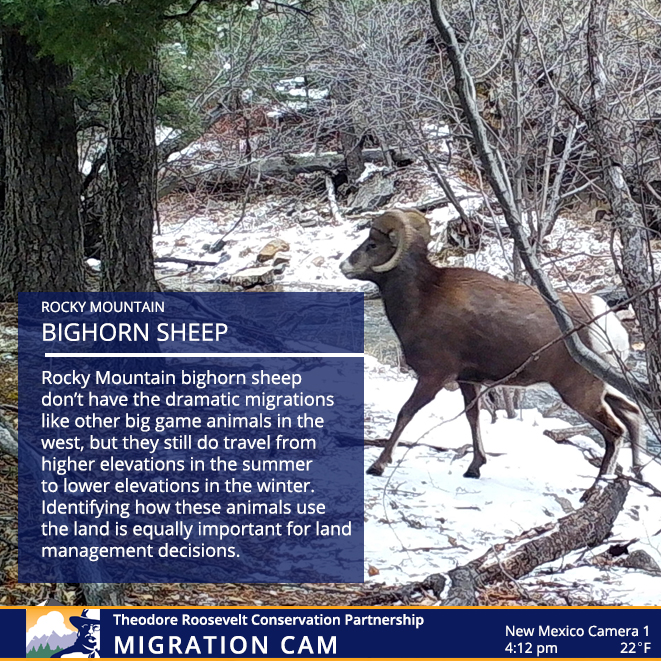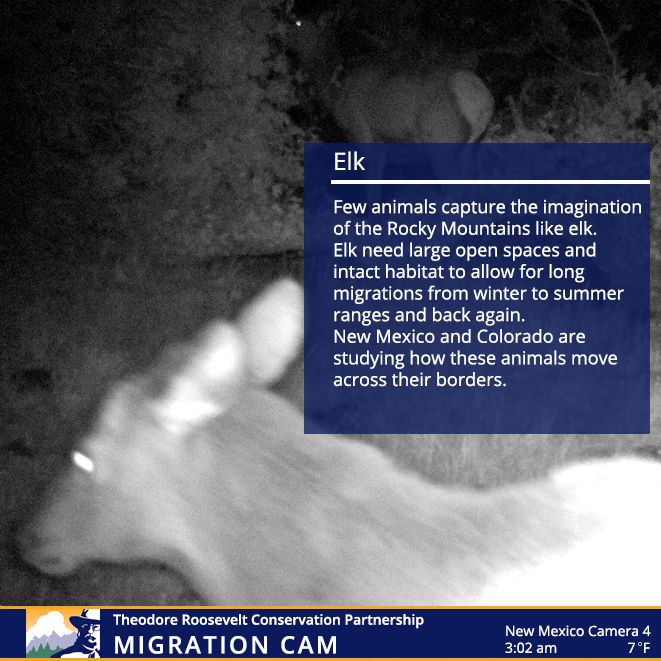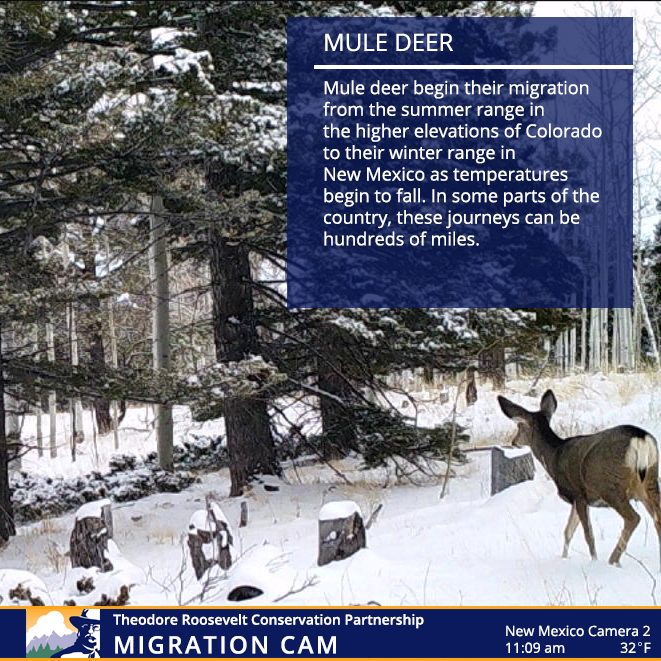Field staff take to the woods to capture images of elk, deer, and sheep on the move
Like many hunters over the past few months, here at TRCP we’ve been paying close attention to the migration corridors and seasonal ranges used by big game species like mule deer, elk, bighorn sheep, and pronghorn antelope.
As landscapes across this country are increasingly fragmented by roads, fences, and human development, maintaining the functionality of these habitats has become an urgent conservation challenge. Meanwhile, a mounting body of scientific research shows that the loss of or disruption to migration corridors and winter range has a severe, negative impact on the health of big game herds.
There’s an old truism that a picture is worth a thousand words, so this fall TRCP took to the field armed with trail cameras to capture some images of these habitats in use. We focused our attention on the Santa Fe and Carson National Forests in northern New Mexico as well as the Rio Grande National Forest in southern Colorado.
We chose these places because ongoing planning efforts by the U.S. Forest Service will determine how these public lands are managed over the next 20+ years. It is imperative that land-use plans for our National Forests and Bureau of Land Management public lands incorporate the latest research on migration and seasonal range in order to ensure the health of wildlife. And where more research is needed to safeguard these habitats, it is critical that our fish and game agencies receive the resources needed to complete this important work.
By no means was our trail cam experiment a scientific effort—we simply thought it would be a fun way to raise awareness about the issue (and a good excuse to stretch our legs while exploring public lands). Besides, there are many other groups and agencies documenting big game migration using the latest methods and technology to improve our understanding of the issue.
So if you don’t already, follow us on Instagram and over the coming weeks you’ll see some of the wildlife images captured on our trailcams.
Or return to this blog, which will be updated as we release new photos on our social media accounts.
Above all else, be sure to support migration corridor conservation and let decision-makers know that sportsmen and women across the country won’t stand by while threats to our big game herds go unaddressed.









Love this and hope it spreads too the Great Lakes States and The Eastern states as well Pennsilvania really needs this